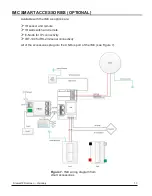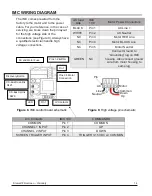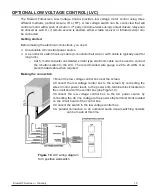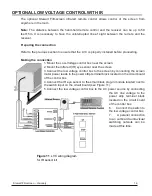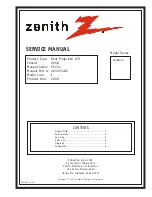
Stewart Filmscreen
– Visionary
21
OPERATING THE SCREEN
The method you use to raise and lower the screen depends on the type of control system and motor
you have installed.
Note:
When you lower or retract the screen, it will stop at its preset limit. If an obstacle, such
as a person or any furniture, is in the path of the screen as it is lowered, use the switch
control to stop the screen’s motion.
The screen will not automatically stop if it hits an
obstacle.
The motor is designed to be used for short operations such as lowering the screen in preparation
for viewing. The motor is not designed for continuous duty. If the motor operates continually for
more than a few minutes, it may automatically shut off to prevent damage from overheating. If the
motor occasionally needs to be run more than normal, i.e., during initial setup and positioning, allow
time for the motor to cool down.
In general, when the screen is not in use, you should store it in the fully retracted position to protect
the screen
’s surface.
It is best practice however, to deploy the screen for extended periods.
Periodic deployment on a regular basis will maximize the flatness and uniformity of the
screen’s surface. The screen benefits from frequent and extended periods of deployment.
⚠
CAUTION
Be careful not to touch or scratch the
screen’s viewing surface.
⚠
CAUTION
If the unit emits any smoke, heat, abnormal noise or unusual odor, the unit is most
likely damaged in some way
— such as damage from a water leak or power surge.
Do not operate the motor if any of these situations occur. Call a qualified service
person for assistance.







